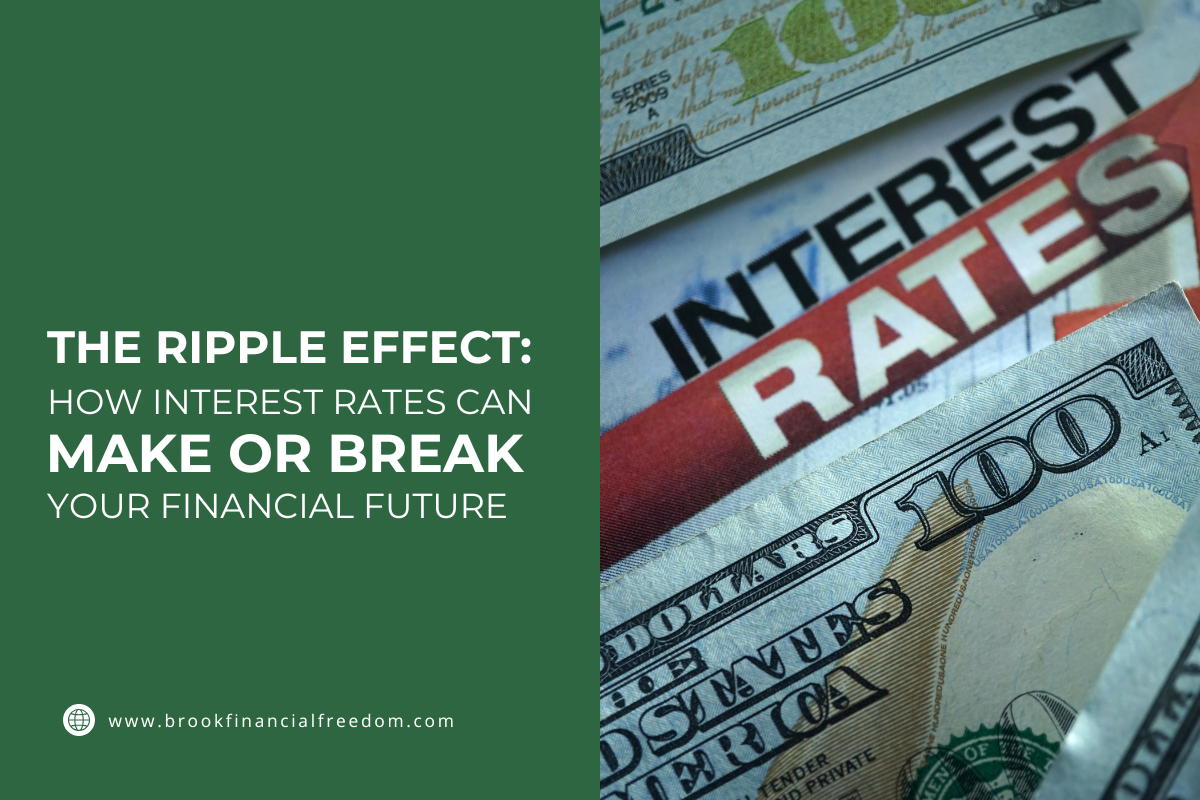The Ripple Effect: How Interest Rates Can Make or Break Your Financial Future
In a world continuously evolving towards greater interconnectivity, understanding the influence of the Federal Reserve's decisions on interest rates is crucial. These decisions are not just numbers on a chart; they have real, tangible effects on our daily lives and the global economy.
This blog post delves into the ripple effect of interest rates, offering insights into how they impact personal financial goals, strategies to manage debt amid rising rates, and the influence of global economic trends on future policies.
*Please note that some links included are affiliate links. Should you make a purchase through these links, I may receive a commission. The content shared is based on personal experiences rather than professional expertise. Please use the advice thoughtfully and consider consulting with a professional for tailored guidance in your unique circumstances.
Understanding Interest Rates and Their Impact
What Are Interest Rates?
Interest rates are the cost of borrowing money or the reward for saving. When you take out a loan or mortgage, the interest rate determines how much extra you'll pay back. Conversely, when you save money, the interest rate dictates how much your savings will grow over time. While this might seem straightforward, the implications are vast and profound.
The Role of the Federal Reserve
The Federal Reserve, often referred to as the Fed, is the central bank of the United States. It plays a critical role in managing the country's monetary policy, primarily through the adjustment of interest rates. The Fed's decisions are aimed at maintaining economic stability, controlling inflation, and fostering employment. However, these decisions also ripple through the economy, affecting everything from mortgage rates to consumer spending.
The Positive and Negative Effects of Interest Rate Changes
Positive Effects
Encouragement to Save: When interest rates rise, saving becomes more attractive. Higher rates mean better returns on savings accounts and fixed deposits, which can be beneficial for individuals looking to build a financial cushion or save for future goals.
Controlled Inflation: By raising interest rates, the Fed can help control inflation. This ensures that the purchasing power of consumers is not eroded, maintaining the value of their money over time.
Strengthening of Currency: Higher interest rates can attract foreign investment, strengthening the national currency. This could lower the cost of imports and improve the balance of trade.
Negative Effects
Increased Borrowing Costs: Higher interest rates mean that loans, including mortgages and credit cards, become more expensive. This can lead to reduced consumer spending and can strain household budgets, particularly for those with variable-rate loans.
Pressure on Businesses: Businesses may face higher borrowing costs, which can reduce investment in growth and expansion. This can lead to slower economic growth and potentially impact employment rates.
Impact on Stock Markets: Rising interest rates can lead to volatility in the stock markets. Investors may shift their focus from stocks to fixed-income securities, which can affect the valuations of businesses.
Long-term Financial Goals and Interest Rates
How Changes Affect Financial Goals
Interest rate changes can significantly impact long-term financial goals. For instance, if you're planning to buy a home, a rise in mortgage rates could increase your monthly payments, affecting your affordability. Similarly, for retirement planning, changes in interest rates can alter the growth of your savings and the potential income from investments.
Strategies to Mitigate Rising Rates
Refinancing Debt: Consider refinancing your existing loans to lock in lower rates before they rise. This can be particularly effective for mortgages or student loans.
Diversification: Diversify your investment portfolio to include a mix of asset classes. This can help mitigate risks associated with interest rate fluctuations.
Increase Savings: Take advantage of higher interest rates by increasing your savings. This can help build a financial buffer against potential increases in living costs.
Global Economic Trends and Federal Reserve Policies
Influence of Global Trends
Global economic trends significantly influence Federal Reserve policies. Factors such as geopolitical tensions, trade policies, and global market performance play a role in shaping the Fed's decisions. For instance, a global economic downturn may prompt the Fed to lower interest rates to stimulate domestic growth.
Staying Informed
By staying informed about global economic trends and the Fed's actions, individuals can make more informed financial decisions. This involves keeping an eye on economic indicators, understanding the implications of Fed announcements, and adjusting personal financial strategies accordingly.
Conclusion: Navigating the Economic Landscape
Understanding the ripple effect of interest rates is not just for economists or financial professionals. It is crucial for everyone aiming to make informed financial decisions. By considering the positive and negative impacts of interest rate changes, aligning long-term goals with current economic conditions, and staying informed about global trends, you can better navigate the ever-changing economic landscape.
Interest rates might seem like an abstract concept, but their impact on our personal and global financial health is profound. As the world becomes increasingly interconnected, taking the time to understand these dynamics can empower you and ensure a more secure financial future.





